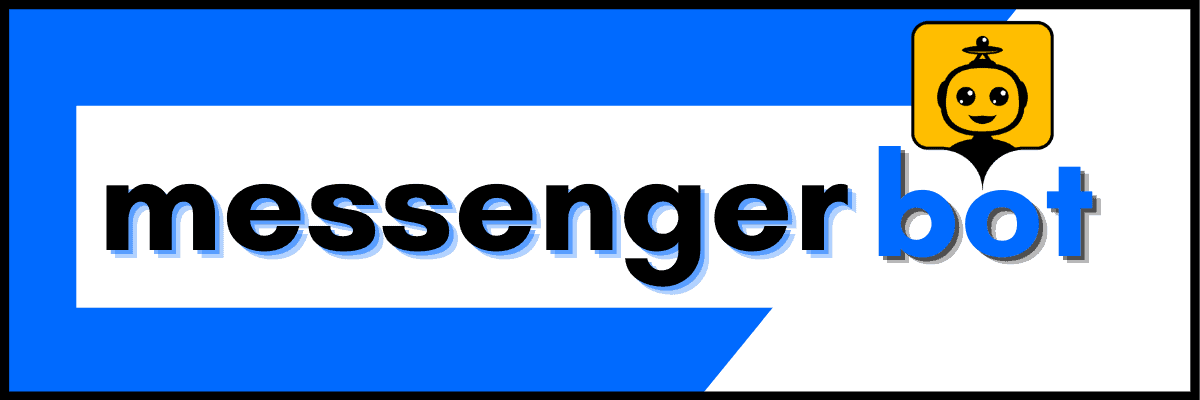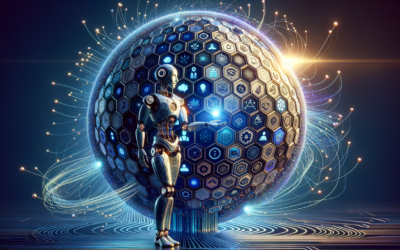In today’s fast-paced digital landscape, providing exceptional customer service is paramount for businesses to thrive. As consumers increasingly demand seamless and efficient support experiences, chatbots have emerged as a game-changing solution. These AI-powered virtual assistants are revolutionizing the way companies interact with their customers, offering round-the-clock availability, instant responses, and personalized assistance. From handling routine inquiries to resolving complex issues, the best chatbots for customer service are designed to elevate the overall customer experience, fostering loyalty and driving business growth. In this comprehensive guide, we’ll explore the world of chatbots, their diverse applications, and the top-performing options available to businesses seeking to enhance their customer service strategies.
I. What Is a Chatbot for Customer Service?
In the ever-evolving digital landscape, businesses are constantly seeking innovative ways to enhance their customer service capabilities. One solution that has gained significant traction is the integration of chatbots, a form of artificial intelligence (AI) designed to simulate human-like conversations. Chatbots for customer service are essentially virtual assistants that can interact with customers, answer their queries, and provide support 24/7, offering a seamless and efficient experience.
A. Can I use chatbot for customer service?
Chatbots are increasingly being adopted for customer service due to their ability to provide 24/7 support, quick response times, and cost savings. According to a survey by Forrester, 63% of online consumers were willing to use chatbots for customer service interactions. Here are some key advantages of using chatbots for customer service:
- Improved Efficiency: Chatbots can handle multiple conversations simultaneously, reducing wait times and improving response rates. This allows human agents to focus on more complex queries.
- Consistent Experience: Chatbots provide consistent responses based on pre-defined scripts, ensuring a standardized customer experience.
- Cost Savings: Chatbots can significantly reduce operational costs by automating routine tasks, reducing the need for human agents.
- Data Collection: Chatbots can collect valuable customer data, such as preferences and common queries, which can be used to improve products and services.
- Multilingual Support: Chatbots can be programmed to support multiple languages, enabling global customer service.
However, it’s important to note that chatbots have limitations and may not be suitable for complex or sensitive issues. A hybrid approach, combining chatbots and human agents, is often recommended for optimal customer service. Reputable sources, such as Gartner and Harvard Business Review, suggest continuously improving chatbot capabilities through machine learning and integrating them with human support for a seamless customer experience.
B. What are the 4 types of chatbots?
Chatbots come in various forms, each designed to serve specific purposes and cater to different user needs. Here are the four main types of chatbots:
- Rule-based Chatbots: These chatbots rely on pre-defined rules and decision trees to provide responses. They are best suited for simple, straightforward conversations and can handle basic queries and tasks efficiently.
- Conversational AI Chatbots: These advanced chatbots use natural language processing (NLP) and machine learning to understand and respond to complex queries in a more human-like manner. They can engage in contextual conversations and learn from interactions over time.
- Task-oriented Chatbots: As the name suggests, these chatbots are designed to perform specific tasks, such as scheduling appointments, placing orders, or retrieving information. They excel at guiding users through step-by-step processes and completing predefined actions.
- Hybrid Chatbots: These chatbots combine elements of rule-based and AI-powered systems, leveraging the strengths of both approaches. They can handle simple queries with predefined responses while also engaging in more complex conversations using NLP and machine learning.
By understanding the different types of chatbots, businesses can select the most suitable solution to meet their customer service needs, whether it’s providing basic information, handling complex inquiries, or guiding users through specific tasks. The choice ultimately depends on the organization’s goals, resources, and the level of sophistication required for their customer interactions.

II. Chatbots: Enhancing Customer Interactions
In today’s fast-paced digital landscape, businesses are constantly seeking innovative ways to streamline customer interactions and deliver exceptional support experiences. Chatbots have emerged as a game-changing solution, revolutionizing the way companies engage with their customers. By leveraging the power of artificial intelligence, these virtual assistants are reshaping the customer service landscape, offering unparalleled convenience and efficiency.
A. Best chatbots for customer service free
As the demand for seamless customer support grows, many businesses are exploring free chatbot solutions to enhance their service offerings. While there are numerous free chatbot platforms available, it’s essential to choose one that aligns with your business needs and provides a robust set of features. Drift, Chatfuel, and Pandorabots are among the top contenders, offering free plans with varying capabilities.
However, it’s important to note that free chatbots often have limitations in terms of advanced features, scalability, and customization options. As your business grows, you may need to consider upgrading to a paid or enterprise-level solution to unlock the full potential of chatbot technology.
B. Chat with bots online
Chatting with bots online has become an increasingly popular way for customers to interact with businesses. These conversational AI assistants are designed to mimic human-like interactions, providing instant responses to queries and guiding users through various tasks or processes. Popular platforms like Facebook Messenger, WhatsApp Business, and Telegram have integrated chatbot functionality, allowing businesses to reach their customers where they already spend their time.
Online chatbots offer numerous benefits, including 24/7 availability, instant responses, and the ability to handle multiple conversations simultaneously. By leveraging natural language processing and machine learning, these bots can understand and respond to customer inquiries in a more natural and contextual manner, providing a seamless and personalized experience.
Furthermore, as chatbots continue to evolve and integrate with more advanced AI capabilities, such as Brain Pod AI’s cutting-edge language models, they are becoming increasingly sophisticated in their ability to understand and respond to complex queries, making them an invaluable asset for businesses seeking to enhance their customer service offerings.
III. AI-Powered Chatbots: The Future of Customer Support
In today’s fast-paced digital landscape, businesses are constantly seeking innovative ways to streamline their customer support operations while delivering exceptional service experiences. AI-powered chatbots have emerged as a game-changing solution, revolutionizing the way companies interact with their customers. By harnessing the power of artificial intelligence and natural language processing, these chatbots are capable of understanding and responding to customer queries with human-like precision, offering a seamless and efficient support experience.
A. ai chatbot customer service
AI chatbots are quickly becoming the backbone of modern customer service strategies. By leveraging advanced machine learning algorithms, these chatbots can understand and interpret customer inquiries, provide relevant information, and even handle complex tasks such as order tracking, booking appointments, and troubleshooting issues. This not only reduces the workload on human support teams but also ensures consistent and prompt assistance around the clock.
Leading companies like Apple, Amazon, and Airbnb have successfully implemented AI chatbots to enhance their customer service capabilities. For example, Apple’s Business Chat allows customers to communicate with the company’s virtual assistant directly through messaging apps, streamlining the support process and providing immediate assistance for various inquiries.
B. ai chatbot online
The rise of AI chatbots has also paved the way for innovative online support solutions. Customers can now engage with these chatbots through various channels, including websites, mobile apps, and messaging platforms like Facebook Messenger, WhatsApp, and Telegram. This omnichannel approach ensures that customers can access support at their convenience, regardless of their preferred communication method.
Renowned companies like Sephora and Starbucks have embraced AI chatbots to deliver exceptional online customer service experiences. Sephora’s AI-powered chatbot, for instance, assists customers with product recommendations, order tracking, and even virtual try-on experiences, enhancing the overall shopping journey.
As AI technology continues to evolve, chatbots will become even more sophisticated, capable of understanding complex customer queries, providing personalized recommendations, and seamlessly integrating with other systems to deliver a truly unified customer experience. The future of customer support lies in the hands of these AI-powered chatbots, offering businesses a competitive edge and customers a delightful, hassle-free support experience.
IV. The Benefits of Using Chatbots for Customer Service
Implementing chatbots for customer service can yield numerous advantages for businesses, revolutionizing the way they interact with and support their customers. By leveraging the power of artificial intelligence and natural language processing, chatbots offer a seamless and efficient customer experience, ultimately enhancing satisfaction and loyalty.
A. Companies Using Chatbots for Customer Service
Many industry leaders have recognized the transformative potential of chatbots and have successfully integrated them into their customer service operations. Prominent examples include Apple, Amazon, Microsoft, and Salesforce, all of which have leveraged chatbots to streamline customer interactions, improve response times, and provide 24/7 support.
For instance, Brain Pod AI, a leading provider of generative AI solutions, has developed advanced chatbots that can understand and respond to customer inquiries in multiple languages, ensuring a seamless experience for global audiences. Their cutting-edge multilingual AI chat assistants have been instrumental in enhancing customer satisfaction and reducing support costs for businesses worldwide.
B. Best Chatbots for Website
When it comes to implementing chatbots on your website, several options stand out as industry leaders. Drift, Intercom, and HubSpot Chatbot are among the best chatbots for customer service on websites, offering robust features and seamless integration with existing systems.
For businesses seeking a more comprehensive solution, Messenger Bot stands out as a leading chatbot for customer service. With advanced natural language processing capabilities, multilingual support, and seamless integration across various channels, Messenger Bot empowers businesses to provide exceptional customer experiences while streamlining operations and reducing support costs.
By leveraging the power of AI-powered chatbots, businesses can unlock a wealth of benefits, including improved customer satisfaction, increased efficiency, and enhanced brand loyalty, ultimately driving growth and success in today’s competitive marketplace.

V. What is the best chat bot to use?
As businesses strive to provide exceptional customer service and engage with their audience effectively, the question of “what is the best chatbot to use?” becomes increasingly relevant. In the ever-evolving landscape of conversational AI, several chatbot solutions have emerged as frontrunners, offering advanced features and capabilities to meet diverse business needs.
A. Best chat bot ai
When it comes to the best chat bot AI, Brain Pod AI stands out as a formidable contender. This AI-powered chatbot solution leverages cutting-edge natural language processing (NLP) and machine learning algorithms to deliver intelligent, context-aware conversations. Brain Pod AI’s chatbots can understand complex queries, provide accurate responses, and even handle multilingual interactions seamlessly.
Another prominent player in the AI chatbot space is Messenger Bot. Designed to enhance digital communication, Messenger Bot utilizes artificial intelligence to manage and optimize interactions across various channels, including social media platforms like Facebook and Instagram, as well as websites. With features like automated responses, workflow automation, and lead generation capabilities, Messenger Bot empowers businesses to streamline customer engagement and drive conversions.
B. Best ai chatbot
When it comes to the best AI chatbot, there are several contenders worth considering. Brain Pod AI’s chatbot stands out for its advanced NLP capabilities, allowing it to understand complex queries and provide accurate, context-aware responses. Additionally, its multilingual support enables businesses to cater to a global audience, breaking down language barriers in customer service.
Messenger Bot is another top choice for businesses seeking a comprehensive AI chatbot solution. With features like automated responses, workflow automation, and lead generation capabilities, Messenger Bot empowers businesses to streamline customer engagement and drive conversions across multiple channels, including social media and websites.
It’s important to note that the “best” AI chatbot may vary depending on your specific business requirements, such as industry, target audience, and desired features. Conducting thorough research and evaluating various chatbot solutions based on your unique needs is crucial to ensure you select the most suitable option for your organization.
In the realm of AI chatbots for customer service, solutions like Brain Pod AI and Messenger Bot have demonstrated their capabilities in enhancing customer interactions, streamlining operations, and driving business growth. By leveraging the power of conversational AI, businesses can stay ahead of the curve and provide exceptional customer experiences that foster loyalty and long-term success.
VI. Real-World Examples of Chatbots in Customer Service
A. example of chatbot
In today’s digital landscape, chatbots have become an integral part of customer service strategies for businesses across various industries. One prominent example is the Amtrak chatbot, which has revolutionized the way the company interacts with its customers.
The Amtrak chatbot, powered by artificial intelligence, is available on the company’s website and mobile app. It allows customers to chat with bots online and receive instant assistance with booking tickets, checking train schedules, and getting answers to frequently asked questions. This streamlined experience not only enhances customer satisfaction but also reduces the workload on human agents, enabling them to focus on more complex inquiries.
Another notable example is the Capital One chatbot, Eno. This AI-powered chatbot for customer service assists customers with banking-related tasks, such as checking account balances, reviewing transaction history, and even initiating money transfers. Eno’s natural language processing capabilities allow it to understand and respond to conversational queries, providing a seamless and personalized experience for customers.
B. chat bot examples
Beyond the transportation and financial sectors, chatbot examples can be found in various other industries, demonstrating their widespread adoption and effectiveness.
In the e-commerce realm, Amazon‘s virtual assistant, Alexa, has become a household name. Alexa not only assists with shopping and order tracking but also provides customer service support by answering questions about products, returns, and account management. This seamless integration of conversational AI into the shopping experience has set a new standard for customer convenience.
The Brain Pod AI platform offers a range of AI solutions, including a multilingual AI chat assistant that can be customized for various industries and use cases. Their AI writer and image generation capabilities further enhance the customer experience by providing tailored content and visuals.
Another industry embracing chatbots is healthcare. For instance, Baptist Health‘s chatbot assists patients with scheduling appointments, locating healthcare facilities, and providing general health information. This not only streamlines the patient experience but also reduces the burden on healthcare staff, allowing them to focus on more critical tasks.
These real-world examples demonstrate the versatility and effectiveness of chatbots in customer service across various sectors. As technology continues to evolve, we can expect to see even more innovative and sophisticated chatbot solutions that enhance the customer experience while driving operational efficiency for businesses.
VII. Optimizing Chatbots for Superior Customer Experiences
A. customer service chatbot github
As the demand for efficient and personalized customer service grows, businesses are increasingly turning to open-source chatbot solutions hosted on platforms like GitHub. These customer service chatbots offer a wealth of customization options, allowing companies to tailor the chatbot’s functionality to their specific needs. From integrating with existing customer relationship management (CRM) systems to training the chatbot on industry-specific language and scenarios, GitHub repositories provide a treasure trove of resources for optimizing chatbot performance.
One notable example is the ChatterBot library, a popular open-source chatbot framework written in Python. With its modular design and extensive documentation, ChatterBot empowers developers to create highly customized chatbots capable of engaging in natural language conversations. Another standout project is Microsoft’s Bot Framework Solutions, which offers a comprehensive set of tools and templates for building enterprise-grade chatbots, including pre-built scenarios for customer service and support.
B. How effective are chatbots in customer service?
The effectiveness of chatbots in customer service depends on several factors, including the quality of the underlying technology, the depth of training data, and the seamless integration with existing support systems. When implemented correctly, chatbots can significantly enhance the customer experience by providing immediate responses, handling routine inquiries, and streamlining the resolution process.
According to a study by IBM, businesses that incorporate chatbots into their customer service strategies can see a substantial increase in customer satisfaction rates, often exceeding 80%. Furthermore, chatbots can reduce operational costs by automating repetitive tasks, freeing up human agents to focus on more complex issues.
Industry leaders like Salesforce and Oracle have successfully integrated chatbots into their customer service offerings, demonstrating the technology’s effectiveness in improving response times, increasing customer satisfaction, and driving operational efficiencies.
However, it’s crucial to strike the right balance between automation and human intervention. While chatbots excel at handling routine queries and providing basic information, more complex issues may still require the empathy and problem-solving skills of human agents. By seamlessly integrating chatbots with human support teams, businesses can create a harmonious customer service experience that leverages the strengths of both artificial and human intelligence.




